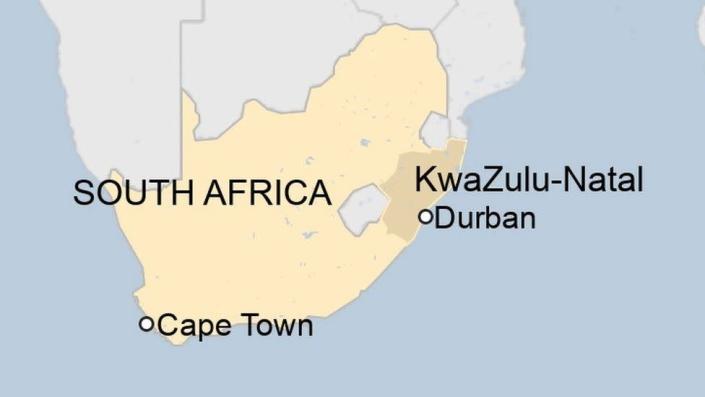
[ad_1]

Search operations are continuing for 63 people still missing following the devastating floods that swept through South Africa’s KwaZulu-Natal province last week.
More than 440 people have died, including two emergency workers.
Some of them swept away by swollen rivers and mudslides.
The government has declared KwaZulu-Natal a disaster area after officials described the floods as some of the worst to ever hit the province.
KwaZulu-Natal premier Sihle Zikalala said that nearly 4,000 homes were destroyed in the floods and more than 8,000 were damaged, most in the coastal city of Durban and its surrounding areas.

Both the police and army were involved in the search effort, with six more bodies recovered on Sunday, local media reported.
One woman, Lethiwe Sibiya, said her niece had not yet been found.
“When the mudslide happened she was washed away. We don’t know where she is. We have tried to get police and their dogs but till today they have not come,” she said.

Nearly 300 schools and some health facilities have also been damaged.
Some communities are completely cut off because roads and bridges have collapsed.
“We don’t have electricity in many, many areas,” said Imtiaz Syed, the leader of the Active Citizens’ Coalition. He said the group is looking at how they can help people clean up their homes and get access to clean water.

Mr Zikalala said that people needed to stop building homes along river banks.
“Many still remain precariously perched on the edge of the river. In reality, no building should ever have been allowed to be erected at such a location,” he said.
During a visit to flood-affected areas last week, South Africa’s President Cyril Rampahosa said the government would “spare no expense” to rebuild the infrastructure and assist all affected families.

Weather experts have said that climate change may be contributing to changing patterns and making such extreme events more frequent.
The rainfall has since eased but the amount of rain which fell last Monday was equal to about 75% of South Africa’s average annual precipitation.
The weather system which triggered the floods saw more than 300mm of rainfall being dumped over a 24-hour period on 11 April – far more than previous serious floods.
In 2019, 165mm fell on in April and 108mm was recorded in October 2017.

You may also be interested in:
[ad_2]
Source link